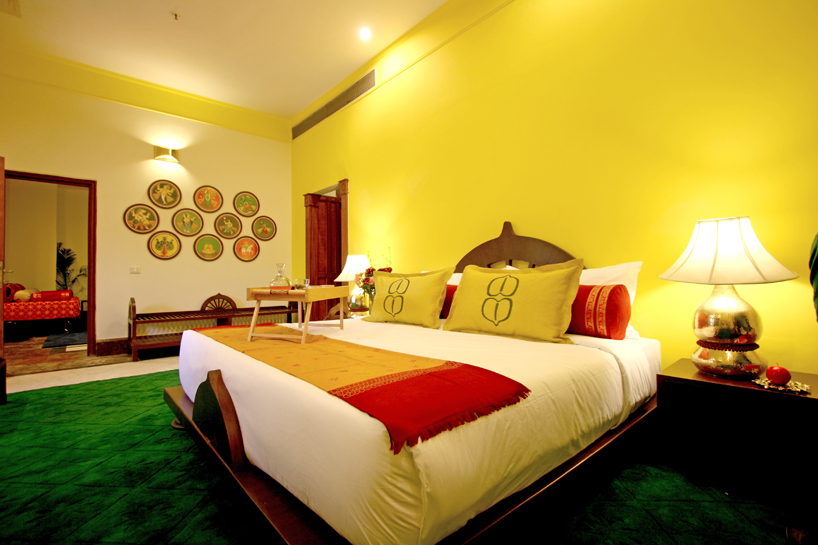
indravan hotel ignca by SahilSarthak from india
designer's own words:
The Indravan,
Indira Gandhi National Centre for the Art, New Delhi
This Hotel is located at the centre of Lutyen's Delhi, a radial away from India Gate, in the very heart of the Indra Gandhi National Center for Arts (IGNCA). As one of the government's most extensive architectural projects in the nation's history, the IGNCA was seen as a powerful opportunity to assert a post-colonial Indian identity in Lutyens' raj hangover Delhi.
Thus we have tried to retrace the Story of India through its several major phases and re-contextualized into different aspects and areas of this concept boutique hotel.
HARAPPAN ROOM
The executive room is inspired by the Harappa Civilization. Grain motifs on carpets signify a flourishing agrarian community, the shapes of toys echo in the lamps, bullock carts in the table and bronze coin jewelry in the lamp stands, as prayer bowls are interpreted in avatars as diverse as lights, the legs of the bed are inspired by harappan worship vessels , and the animal seals signifiying the concept of a currency, are embossed into bedside table tops.
MUGHAL ROOM
Intricate jharokhas and jail works perpetuate through mosquesand forts, their passion for symmetry and geometric motifs percolates into The Mughal rooms. In a period where Persian and Indian architecture meet, formidable forts were attired in passionately rich inlay colours of golds, reds, Persian blues, silver and greens.
On Lapis Lazuli walls tiny pieces of broken sheeshas (glass) embedded in jaali geometrical patterns, hang like frosty icicles behind the bed in the Mughal Rooms. Elements of the Red Fort silhouette is captured in the backs and of chairs and beds - evocative of the formidable strength of Mughal forts. Velvet dominates in soft furnishings, printed with glimpses of scenes from daily life.
GOLDEN AGE ROOM
This chapter of Indian history saw the beginning of the Classical Ages. From the time when innovation is no longer functional but aesthetic, an air of prosperity filters into the rooms of the Golden Ages. Bright and vibrant marigold yellows, rani pinks and peacock blues merge with generous doses of gold and bronze, inspired from clothing and temple art. Sublime motifs on chairs, sofas evocative of the singhasan/bedi of kings and deities, furniture is inspired by intricate temple architecture, the curves of a veena echo in the shape of a curved couch, while the iron pillars built during this period of great metallurgical advances form the dining table legs. Folk tales from the Panchatantra splash across the walls and a the soul of a Kanjeevaram sari reflects on the blinds.
QUTUB CHANDELIER
If Delhi is the microcosm of India then The Qutub Minar is its iconinc manifestation. Towering over it's ever changing history and landscape, it reconfirms Delhi's status as a seat of power, epicentere of culture, knowledge institutions, trade and commerce.
Therefore we drew inspiration from this great architecture to create about 12 meters long metal installation chandelier which hangs in the central lobby of the hotel. This metal chandelier is completely hand crafted by artisans who traditionally work on beaten metal. Precesion, function and aesthetics went hand in hand in creating this complex structure which was worked by these highly skilled craftsmen over a period of two months.
Golden Age Bed Room at Indravan Hotel at IGNCA New Delhi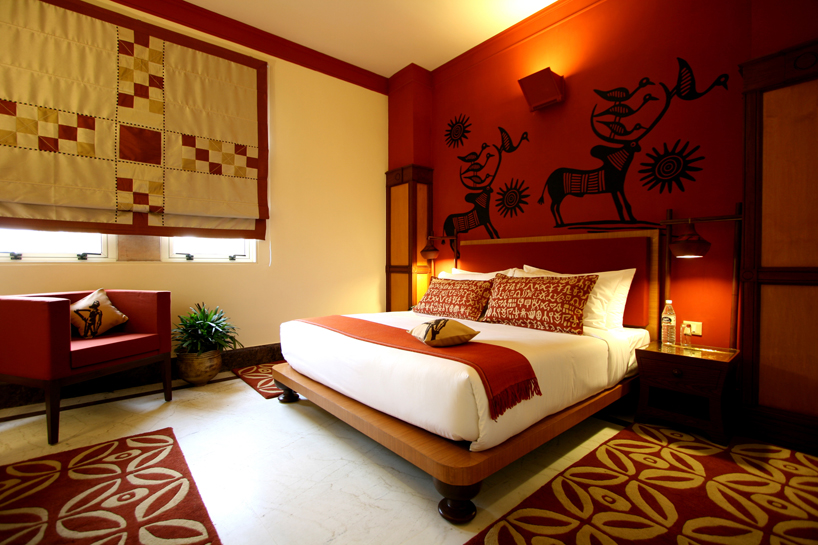 Harappa Bed Room at Indravan Hotel at IGNCA
Harappa Bed Room at Indravan Hotel at IGNCA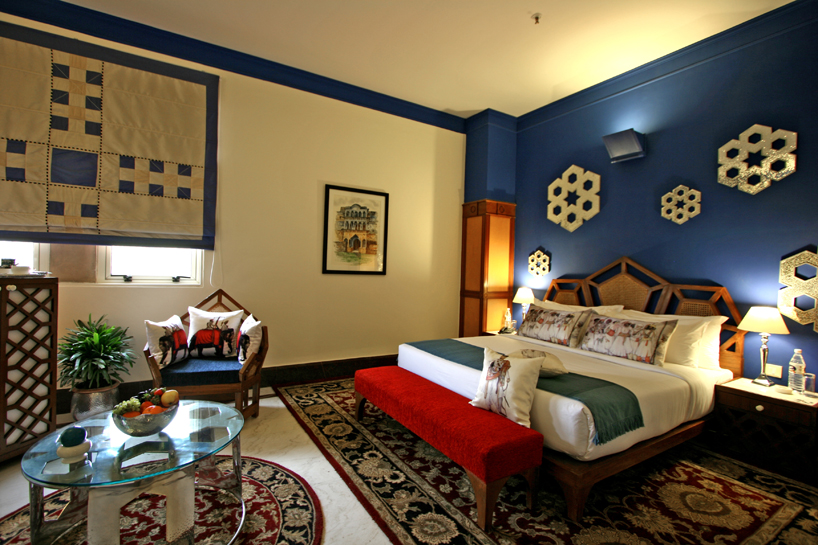 Mughal Age Bed Room at Indravan Hotel at IGNCA
Mughal Age Bed Room at Indravan Hotel at IGNCA Golden Age Living Room, at Indravan Hotel, IGNCA Hotel
Golden Age Living Room, at Indravan Hotel, IGNCA Hotel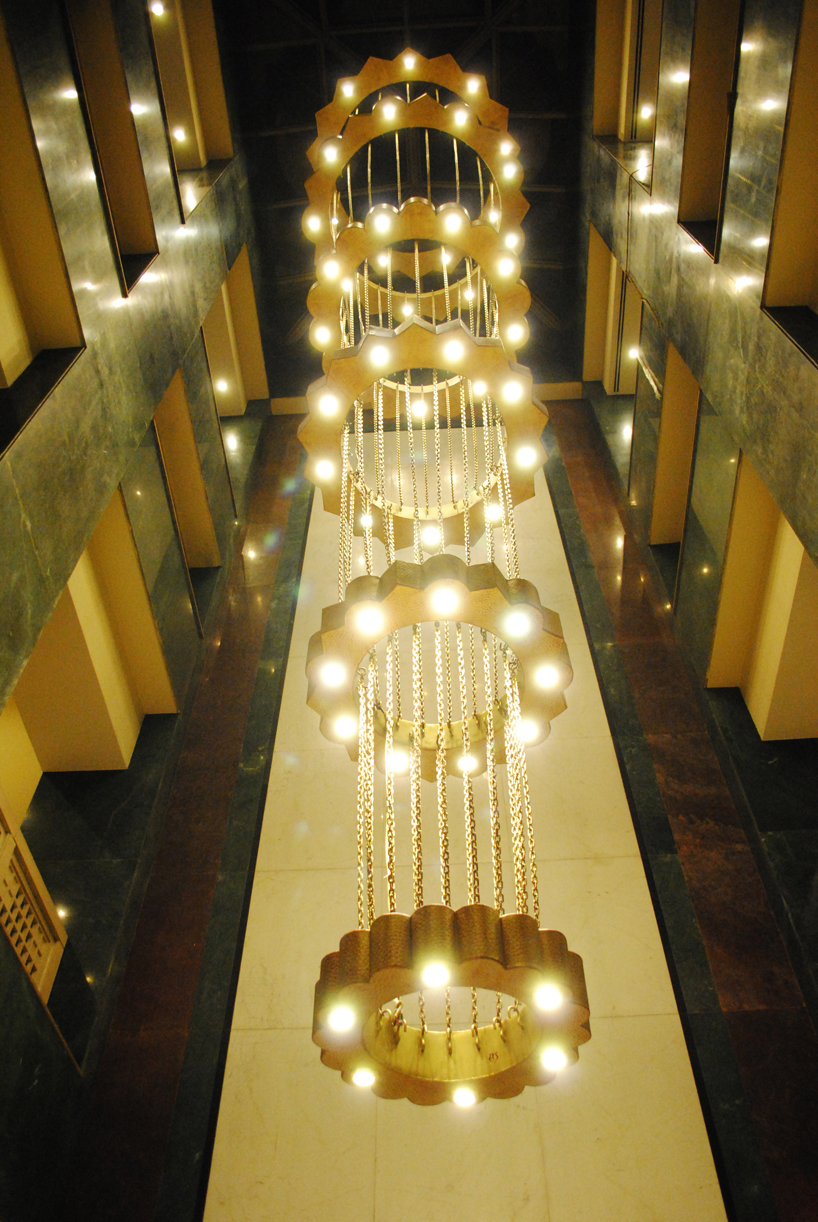 Qutab Chandelier at Indravan Hotel
Qutab Chandelier at Indravan Hotel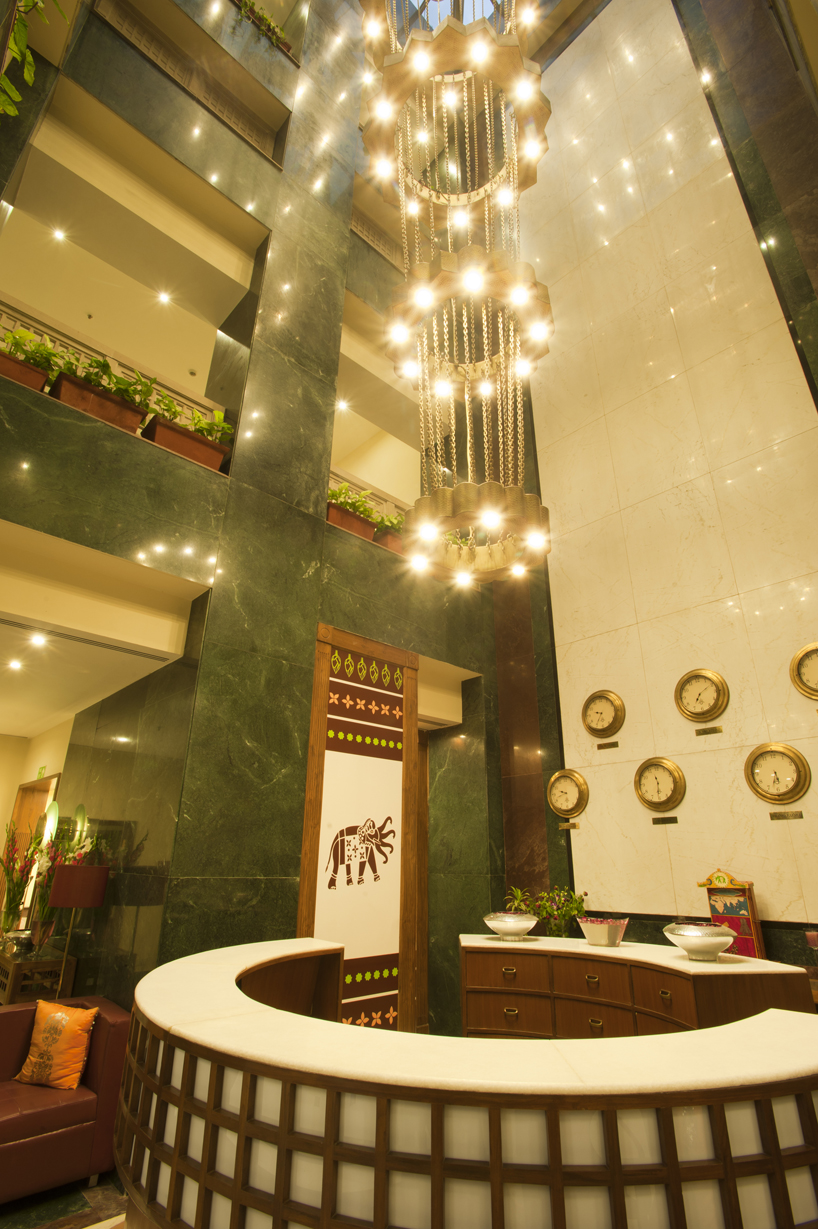 Qutab Chandelier at Indravan Hotel
Qutab Chandelier at Indravan Hotel